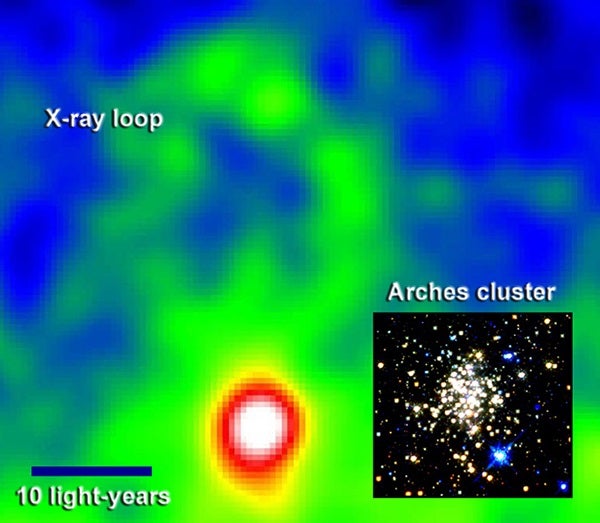Scientists using the European Space Agency’s XMM-Newton X-ray satellite have discovered a puzzling loop of emission near the Milky Way’s center. The loop lies near the Arches Cluster, one of the most compact young star clusters in our galaxy, but astronomers aren’t sure if the two are related.
Arches lies 25,000 light-years from Earth, and sits just 100 light-years from the galaxy’s center. The cluster packs at least 150 hot, young stars within a volume just 2-light-years across. For comparison, our Sun’s nearest neighbor, Proxima Centauri, is 4.2 light-years away.
Masaaki Sakano of the University of Leicester, England, led the international team, which observed the Arches Cluster repeatedly using XMM-Newton as part of an X-ray survey of the galaxy’s center. Sakano will present the find at the Royal Astronomical Society’s National Astronomy Meeting in Birmingham tomorrow.
The loop’s X-ray spectrum is extraordinary, Sakano says. “Most diffuse X-ray sources in the universe have a characteristic temperature because they are the residual radiation from an event, such as a supernova explosion. However, in this case, the loop is non-thermal, and this means … the structure is … the result of some ongoing process.”
The most straightforward interpretation, Sakano believes, is that some local processes accelerate loop particles to energies 1,000 times greater than man-made accelerators can manage. Learning just what those processes are, and how they may be related to star formation in Arches, awaits further study.










